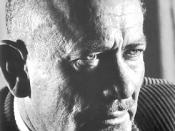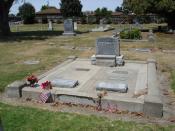John Steinbeck in his parable-like novel, The Pearl, embraces the dark power of greed, which ultimately results in destruction. Kino, a simple Mexican pearl diver who provides for his wife Juana and baby boy Coyotito, finds a pearl, which he hopes will provide his family a better life, but instead shatters his life when his only child is killed by the men who are hunting him. Steinbeck relates this story to universal values. Animal imagery is an essential part of The Pearl that infiltrates the structure of the novel. Steinbeck utilizes animal imagery to foreshadow Kino's catastrophe, to illustrate Kino's character decline, and to symbolize the corruption of civilization.
ÃÂThe buyer's eyes had become as steady and cruel and un-winking as a hawk's eyes". In this quote, the pearl buyer is compared to a hawk, which is an evil bird. This represents how malicious the pearl buyer is to Kino, and that he will try to cheat Kino.
As a result of the pearl buyers trickery, Kino plans to sell his pearl at the capital, and on the way, "Some large animal lumbered away, crackling the undergrowth as it went" by Kino. This symbolizes how clumsy the village people have acted when attempting to steal the pearl from Kino. Along with the fact that the whole village wanted to pilfer Kino's pearl.
ÃÂThe poison sacks of the town began to manufacture venomÃÂ. In this quote, the people in the town were compared to the poison of a snake. This represents how the townspeople acted while Kino had his pearl. Everyone was thinking about their own secret, selfish desires. ÃÂAnts busy on the ground, big black ones with shiny bodies, and little dusty quick ants. Kino watched with the detachment of God while a dusty ant frantically tried to escape...


